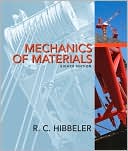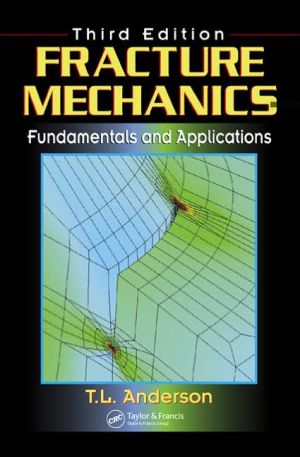Modern Simulation Strategies for Turbulent Flow
Search in google:
Geurts presents state-of-the-art analysis of turbulent flow simulation techniques and presents direct numerical simulation and large-eddy simulation. (Technology & Industrial Arts) Booknews Presents direct numerical simulation (DNS) and large-eddy simulation (LES) approaches for simulating turbulent flow. Explores the balance between reduction of information content in the smoothed representation on the one hand, while retaining accurate predictions in a given application area on the other. Chapters 1-9 focus on subgrid modeling and furnish connections with turbulence theory. Chapters 10-16 are dedicated to physical and numerical aspects arising from a variety of direct- and large-eddy simulations. Specific topics include the spatial velocity increment as a tool for SGS modeling, the tensor-diffusivity mixed model, and the Navier-Stokes-alpha model. The book is not indexed. Geurts is affiliated with the University of Twente and the University of London. Annotation c. Book News, Inc., Portland, OR (booknews.com)
Prefaceix1A Review of Progress on Direct and Large-Eddy Simulation11.1Background11.2Direct numerical simulations of turbulence21.2.1Turbulence scales and resolution requirements21.2.2Validation procedures41.2.3The changing perspective of computer hardware41.2.4Applications51.3Large-eddy simulations81.3.1Background: Smagorinsky and dynamic models81.3.2Engineering and atmospheric applications101.3.3New theoretical developments111.4Conclusions161.4.1Guidelines for application of current LES technology161.4.2Key issues and requirements for future research172Deconvolution Methods for Subgrid-Scale Approximation in LES212.1Introduction212.2Filtering approach: soft and hard deconvolution problem232.2.1The filtered conservation law232.2.2Filter-kernel definitions262.3Regularized deconvolution292.3.1Deconvolution methods from image processing292.3.2Review of deconvolution-type subgrid-scale models312.3.3The approximate deconvolution model362.4Secondary regularization382.5Conclusions413The subgrid-scale estimation model for decaying isotropic turbulence453.1Introduction453.2Previous formulation of subgrid scale estimation procedure463.3A Modified Formulation of the Velocity Estimation Procedure493.4Simulations Using the Improved Velocity Estimation Procedure503.5Conclusions554The spatial velocity increment as a tool for SGS modeling574.1Introduction574.2Properties of the Subgrid Scale Stress Tensor584.2.1Definition of a general filter584.2.2Governing Equations of the Flow594.2.33D Taylor Expansion of the SGS Stress Tensor594.2.4Relation between the Generalized Leonard Stress Tensor and the SGS stress tensor604.2.5Filtering in time614.3The INC model: from a 1D to a 3D formulation624.3.1Temporal approach624.3.2Spatial 1D-approach634.3.3Spatial 3D-approach644.4A priori tests of the INC model664.4.1Mean value of the SGS stress tensor664.4.2Properties of the model in terms of the SGS Energy production674.5A posteriori tests of the INC model684.5.1An alternative Dynamic Procedure684.5.2LES of fully developed pipe flow at 180 Re 520694.6Sensitivity analysis of the INC model784.6.1Decoupling numerics from model effect784.6.2Amplitude of the model coefficient804.7Conclusions and Outlook805Tensor-diffusivity mixed model: balancing reconstruction and truncation855.1Introduction865.2Definitions, filtered-scale stress and subgrid-scale stress865.3Approximate reconstruction, tensor-diffusivity and mixed modeling895.4Theoretical aspects of the mixed model915.5Ties with other models925.6The dynamic procedure applied to the mixed model935.7Results for LES of isotropic turbulent decay945.7.1The tensor-diffusivity model alone955.7.2The mixed model975.7.3Spectrum of dissipation995.7.4More challenging LES1015.8Conclusions1016Navier-Stokes-alpha model: LES equations with nonlinear dispersion1076.1Introduction1076.2Kelvin-filtered turbulence models1096.3Comparison of the NS--[alpha] model with LES equations1126.4Transformation properties1146.5Relation to generalized similarity models1166.6Spectral space interpretation1197Rotational transformation and geometrical correlation of SGS models1237.1Introduction1237.2Subgrid-scale stress tensor in rotating frame1257.2.1Formulation of the generalized scale-similarity model1267.2.2Compatibility of the models with rotational constraint1277.2.3Assessment in homogeneous turbulence subjected to rotation1307.2.4Higher-order models for the modified cross term1317.3Assessment of subgrid models in dissipative vortical structures1337.3.1Classification method and DNS data analysis1347.3.2Assessment of the SGS models1367.4Conclusions1388Renormalization-type methods applied to the simulation of turbulence1418.1Introduction1418.2Statement of the problem1438.2.1Basic spectral equations1438.2.2The energy spectrum and mode elimination1458.2.3Need for a conditional average1488.3Conservation equations for the explicit scales1498.3.1Ensemble-averaged conservation equations and the ad hoc effective viscosity1508.3.2Conditionally-averaged conservation equations1518.3.3Quasi-stochastic estimate of the renormalized dissipation rate1538.4Conditional mode elimination and scale invariant dissipation1548.4.1Numerical results and discussion1568.5Effective viscosity in a constrained simulation1578.5.1The direct numerical simulation1578.5.2The constrained simulation1598.6The local energy transfer (LET) theory1638.6.1The LET equations and the test problems1638.6.2Freely Decaying Turbulence1658.6.3Forced Turbulence1658.7Discussion1689Ten years of the dynamic model1739.1Introduction1739.2The origin of the dynamic model1759.3Symbols: horizontal and vertical notations1769.4The dynamic procedure: various contributions and problems1789.5Criticism1829.6Realizability and reversibility1839.7The renormalized filter and associated renormalized model1859.8Future strategies: additive dynamic procedures1869.9Conclusions18810Computation of the lobe-and-cleft instability19110.1Introduction19110.2Mathematical Approach19310.3Two-dimensional base flow19510.4Linear-stability analysis19610.4.1Computational approach19810.4.2Discussion of the stability results19910.5Direct numerical simulations20110.6Concluding Remarks20411Wall-layer models for LES of separated flows20711.1Introduction20711.2Formulation21211.2.1Numerical method and subgrid-scale model21211.2.2The Two-Layer Model21211.3Results21411.4Conclusions22112VLES of flows driven by thermal buoyancy and magnetic field22312.1Introduction22312.2VLES methods22412.3Classic and magnetic Rayleigh-Benard convection: a case for VLES22612.3.1Effects of a magnetic field22712.3.2Flows considered22912.4Mathematical Rationale22912.4.1The subscale model23012.4.2Evaluation of turbulent heat flux23212.4.3Numerical method23312.5Illustrations23312.6Conclusions24313DNS of non-premixed combustion in a compressible mixing layer24713.1Introduction24713.2Governing equations24813.3Numerical method25013.4Problem definition and validation25013.5Results25113.6One-dimensional flamelets25513.7Flamelet analysis25713.8Conclusions2514DNS and LES of Turbulence-Combustion Interactions26314.1Introduction26314.2Direct Numerical Simulation26514.3Large Eddy Simulation26914.4DNS of High Speed Combustion27314.4.1Heat Release Effects27414.4.2Combustion-Generated Turbulence27914.4.3Counter-gradient Diffusion28014.5DNS and LES of Low Speed Combustion28314.5.1DNS of Fires28414.5.2LES of Thermal and Fire Plumes28714.6Summary28915Large Eddy Simulation of compressible turbulent jets29515.1Introduction29515.2Large Eddy Simulation29615.2.1LES models29815.2.2The dynamic procedure29915.3Numerical method and boundary conditions30015.3.1Inflow conditions30115.4Results30215.5Conclusion30616Numerical effects contaminating LES; a mixed story30916.1Introduction30916.2Reference DNS and LES of a temporal mixing layer31216.3Refining the grid at constant filterwidth31516.4Refining the grid at constant filterwidth to mesh-spacing ratio32016.5Discussion of results and cost322








